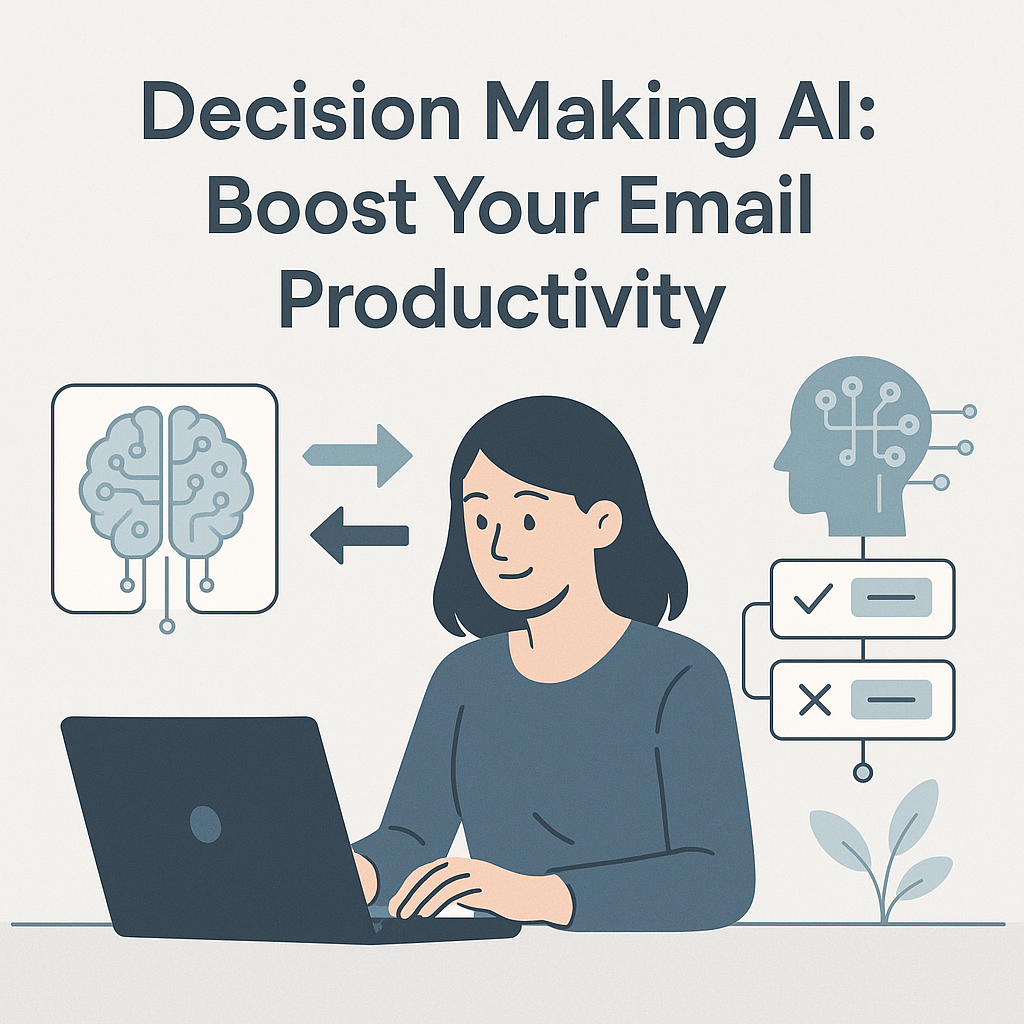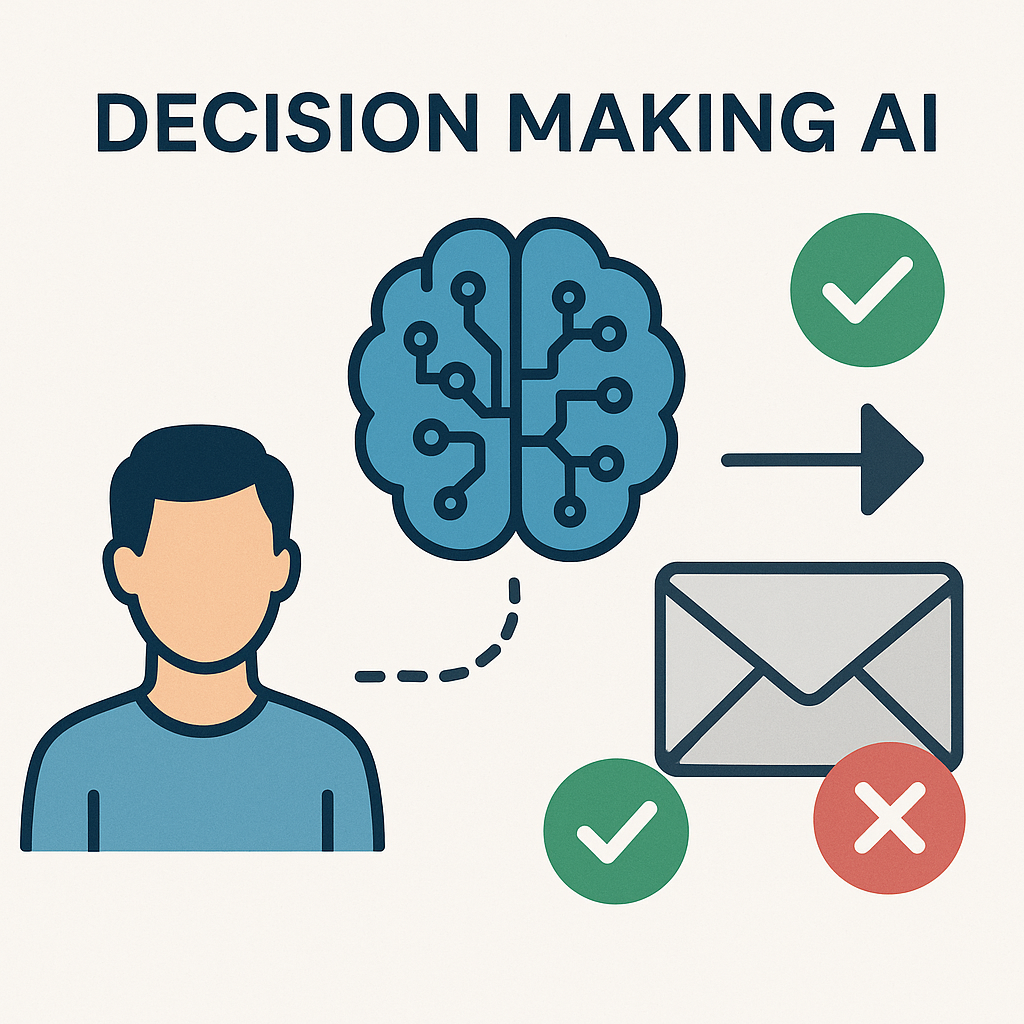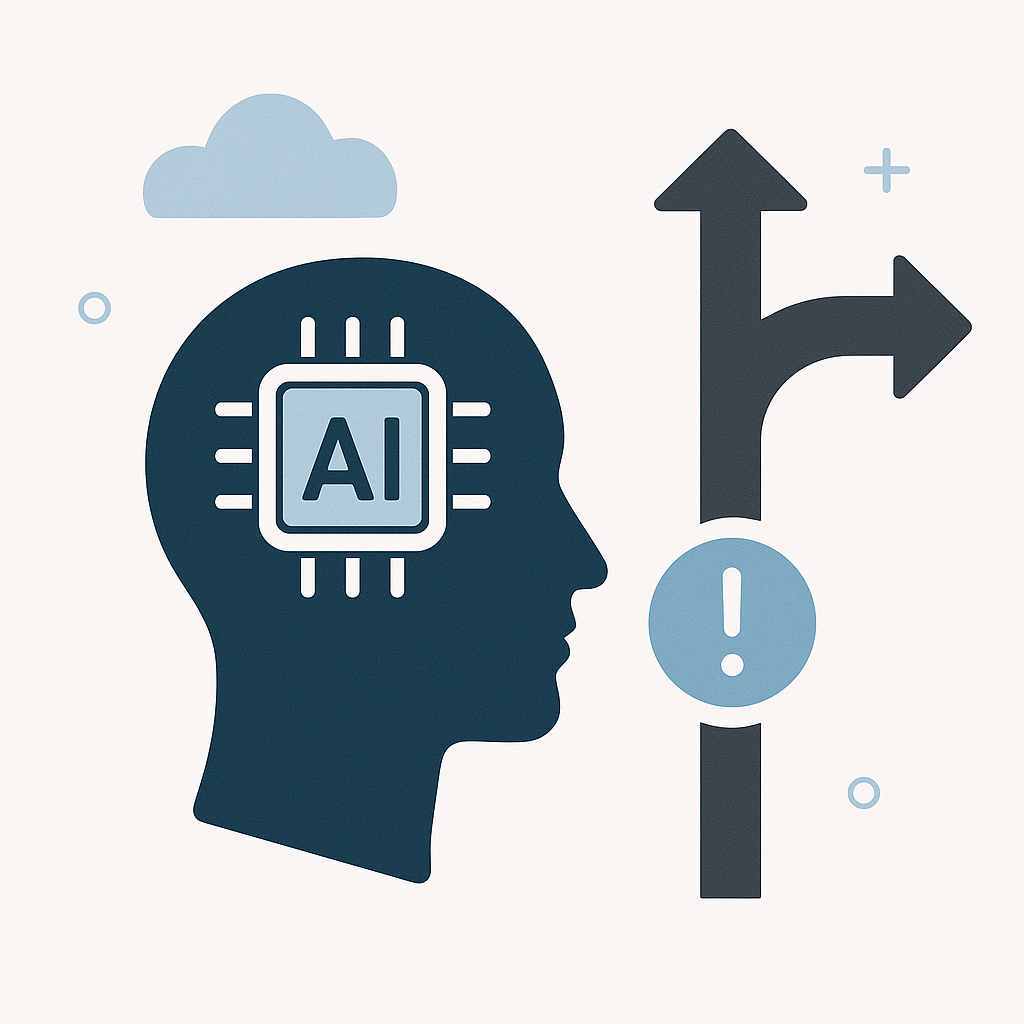Decision Making AI: Boost Your Email Productivity

In today's fast-paced business environment, the inbox often feels like a relentless tide, threatening to drown even the most organized professionals. We're bombarded with hundreds of emails daily, each vying for our attention, demanding decisions, and pulling us away from strategic work. This constant influx can lead to missed opportunities, delayed responses, and significant dips in overall productivity. But what if technology could help you navigate this digital deluge, not just by managing messages, but by empowering you to make smarter, faster decisions about them? This is where the transformative power of decision making ai comes into play, revolutionizing how we approach AI email management and boosting efficiency for AI for business leaders.
Understanding AI-Powered Decision Making in Email
At its core, decision making ai in the context of email management isn't about replacing human judgment entirely; it's about augmenting it. Artificial intelligence, particularly through machine learning (ML) and natural language processing (NLP), can analyze vast amounts of email data with a speed and accuracy that far surpasses human capabilities. These algorithms learn to identify patterns, understand context, gauge sentiment, and predict urgency, all of which are crucial components of effective decision-making.
Think of it as having an incredibly intelligent assistant who doesn't just read your emails but understands their significance relative to your goals and priorities. This AI doesn't just sort emails into folders; it helps you decide which emails need immediate attention, which can be delegated, which require a detailed response, and which are simply informational. It acts as a cognitive filter, reducing the mental load associated with sifting through potentially thousands of messages. As one source puts it, "AI helps tackle email overload by automating management, categorizing, and drafting responses."1 This allows professionals to focus their valuable time and energy on tasks that truly require their unique expertise.
The process involves AI systems learning from your past behavior, communication patterns, and explicit preferences. For instance, an AI can learn that emails from a specific client regarding Project X are always high priority, or that certain types of newsletters can be safely deferred. This level of personalization is key to making AI truly effective in a business setting, moving beyond generic rules to nuanced, context-aware decision support.
How AI Enhances Email Prioritization and Filtering
One of the most immediate and impactful applications of decision making ai in email is through enhanced prioritization and filtering. This is where the concept of a truly intelligent inbox comes to life, moving beyond simple chronological sorting or basic keyword filters.
AI excels at smart email sorting by analyzing multiple factors simultaneously:
- Sender Importance: AI can learn who your key stakeholders are – clients, superiors, critical team members – and automatically flag or elevate their messages.
- Content Analysis: Using NLP, AI can understand the subject matter and body of an email to determine its urgency and relevance. Keywords, phrases, and even the sentiment expressed can signal a need for prompt action.
- Contextual Awareness: AI can consider your calendar, project management tools, and past interactions to understand the context of an incoming email. An email about a meeting you're scheduled for, or a follow-up to a critical project, will naturally be prioritized.
- Urgency Detection: AI models can be trained to recognize linguistic cues that indicate urgency, such as "ASAP," "urgent," or phrases suggesting a time-sensitive issue.
This intelligent filtering significantly reduces the time spent manually sorting through messages. Instead of spending the first 30 minutes of your day just trying to figure out what's important, AI presents you with a curated list of priorities. Tools that offer advanced filtering capabilities, sometimes as alternatives to traditional solutions, leverage AI to achieve this. For example, exploring best SaneBox alternatives for email productivity can lead you to platforms employing sophisticated AI to declutter your inbox.
The result is a more organized and actionable inbox, allowing you to tackle your most critical tasks first. This proactive approach to managing your communications is fundamental to optimizing email workflow and ensuring that no important message slips through the cracks.
AI for Smarter Email Response and Automation
Beyond just sorting and prioritizing, decision making ai can also significantly streamline the response process. This involves automated email responses and AI-assisted drafting, freeing up professionals from repetitive communication tasks.
Consider the sheer volume of routine inquiries that land in many inboxes daily – meeting requests, questions about standard procedures, or requests for information readily available elsewhere. AI can handle many of these efficiently:
- Automated Responses to FAQs: AI can be trained to recognize common questions and provide pre-approved, contextually relevant answers, or direct the sender to relevant resources. This is particularly useful for customer support or HR functions.
- AI-Assisted Drafting: Many AI tools can generate draft responses based on the content of the incoming email. You can provide a few keywords or a general instruction (e.g., "Politely decline this meeting request due to a conflict"), and the AI will craft a professional draft for your review and sending. This drastically cuts down writing time.
- Scheduling Assistance: AI can analyze your calendar and suggest optimal times for meetings, or even handle the back-and-forth communication required to find a mutually agreeable slot.
- Summarization: For long email threads, AI can provide concise summaries, allowing you to quickly grasp the key points and decide on the next steps without reading every single message.
These capabilities are not just about speed; they are about making your communication more effective and consistent. By automating or assisting with routine responses, AI allows you to dedicate more cognitive resources to crafting thoughtful, strategic communications for more complex or sensitive matters. As highlighted by GPT Workspace, "Maximize your email productivity with AI-powered tools. Discover how AI can sort, prioritize, and draft responses to streamline your inbox and save you time."2 This intelligent automation is a cornerstone of modern email productivity tools.
Leveraging AI for Data-Driven Email Insights
Perhaps the most profound impact of decision making ai lies in its ability to extract valuable insights from your email communications, fostering truly data-driven communication. Your inbox is a treasure trove of information about your business, your clients, and your operations. AI can unlock this data to inform strategic decisions.
Here's how AI can provide actionable insights:
- Trend Identification: AI can analyze the content of your emails over time to identify recurring themes, common customer pain points, emerging market trends, or frequently asked questions. This information can guide product development, marketing strategies, and operational improvements.
- Key Contact Identification: Beyond just flagging important senders, AI can identify influential contacts, key decision-makers within client organizations, or individuals who consistently engage with your most important communications. This is invaluable for sales and relationship management. For instance, if you're in sales, understanding who your key prospects are and what they're talking about is critical. Tools that use AI for sales prospecting can leverage email data to refine outreach strategies and boost revenue.
- Sentiment Analysis: AI can gauge the emotional tone of emails, helping you understand client satisfaction, employee morale, or the general reception of a new initiative. This allows for proactive management of relationships and issues.
- Performance Metrics: AI can track response times, engagement rates with certain types of emails, and the effectiveness of different communication strategies, providing objective data to improve your overall communication performance.
By transforming raw email data into digestible insights, AI empowers leaders to make informed decisions based on evidence rather than intuition alone. As noted by Backstroke, "AI helps to analyze large amounts of data, identify patterns, and provide insights to aid leaders in making more informed and efficient decisions."3 This approach shifts email management from a purely administrative task to a strategic analytical function.
AI's Role in Improving Communication Effectiveness
Beyond mere efficiency, decision making ai plays a crucial role in enhancing the overall quality and effectiveness of business communication. It’s not just about sending more emails faster; it’s about sending the *right* emails, in the *right* way, to the *right* people.
Here’s how AI contributes to better communication:
- Tone and Style Optimization: AI tools can analyze the tone of your drafted emails. Are you sounding too aggressive, too passive, or perhaps not professional enough? AI can offer suggestions for rephrasing to ensure your message aligns with your intended tone and brand voice. This is particularly important for AI for business leaders who must project a consistent and professional image.
- Clarity and Conciseness: AI can identify jargon, convoluted sentences, or grammatical errors that might hinder comprehension. By suggesting clearer phrasing and more concise language, AI helps ensure your message is understood quickly and accurately.
- Personalization at Scale: While AI can automate responses, it can also help personalize communications even further. By analyzing customer data or past interactions, AI can suggest personalized talking points or content tailored to specific recipients, making your communication feel more relevant and impactful. This is a key aspect of data-driven communication.
- Ensuring Follow-Through: AI can act as a reminder system, ensuring that important follow-ups aren't missed. It can track commitments made in emails and prompt you to take action or delegate tasks, improving reliability and accountability.
By integrating AI into your communication strategy, you’re not just managing your inbox; you’re refining your ability to connect, persuade, and inform. This leads to stronger relationships with clients, more engaged teams, and ultimately, better business outcomes.
Implementing AI for Enhanced Decision Making in Your Workflow
Integrating decision making ai into your daily routine might seem daunting, but it's a strategic move that can yield significant productivity gains. The key is to approach it systematically and choose tools that align with your specific needs. This is where optimizing email workflow truly begins.
Here’s a step-by-step guide:
- Identify Your Biggest Email Pain Points: Before adopting any new technology, understand where you're losing the most time or making the most mistakes. Is it prioritization? Drafting replies? Managing follow-ups? Knowing this will help you select the right AI tools.
- Explore Available AI Email Productivity Tools: The market offers a wide range of solutions, from standalone AI email assistants to features integrated into existing platforms. You might be looking for tools that offer smart email sorting, automated email responses, or advanced analytics. For instance, exploring comprehensive AI productivity tools can provide a broad overview of available technologies.
- Consider AI Assistants for Executive Support: For busy professionals, the concept of an intelligent assistant is crucial. Tools like an ai executive assistant can help streamline your workflow by handling routine tasks, prioritizing communications, and even drafting initial responses, allowing you to focus on high-level decision-making. These platforms are designed to integrate seamlessly into your existing digital infrastructure.
- Start Small and Iterate: You don't need to implement every AI feature at once. Begin with one or two core functionalities, such as AI-powered email filtering or a smart response suggestion tool.
- Train the AI (and Yourself): Many AI systems learn from user feedback. Actively train the AI by marking emails correctly, providing feedback on suggested responses, and refining its understanding of your priorities. Similarly, learn how to best leverage the AI's capabilities.
- Integrate with Existing Systems: Ensure the AI tools you choose can integrate with your CRM, calendar, and other business software. This creates a more cohesive and efficient workflow. For example, if you're focused on sales, tools that integrate AI for email can greatly enhance your outreach. Explore how AI for sales prospecting can leverage your email data.
- Monitor and Adapt: AI is not static. Continuously monitor its performance, adapt its settings as your needs evolve, and stay updated on new features and capabilities.
By thoughtfully integrating these tools, you can transform your email management from a time-consuming chore into a strategic advantage, supported by intelligent decision-making processes.
The Future of AI and Email Productivity
The evolution of decision making ai in email management is far from over. We are moving towards a future where AI will not just assist but proactively manage significant aspects of our communication workflows.
Imagine AI agents that can:
- Proactively identify and resolve potential communication conflicts before they arise.
- Automate entire communication sequences based on predefined triggers and complex decision trees.
- Predict your communication needs and prepare draft responses or summaries before you even open your inbox.
- Act as sophisticated digital negotiators or information gatherers, handling complex multi-party email exchanges autonomously.
- Provide real-time coaching on communication effectiveness during live interactions or when drafting messages.
As AI continues to advance, the lines between human and AI-driven decision-making in communication will blur further. The goal is to create a symbiotic relationship where AI handles the heavy lifting of data analysis and routine tasks, allowing human professionals to focus on creativity, strategic thinking, and building meaningful relationships. This future promises an even greater leap in email productivity tools and a more intelligent approach to data-driven communication.
Conclusion
The challenge of information overload in business emails is a pervasive problem, but decision making ai offers a powerful solution. By leveraging AI for smart email sorting, automated email responses, and insightful data analysis, professionals and AI for business leaders can dramatically enhance their productivity and make more informed decisions. This technology transforms email from a potential bottleneck into a strategic asset, driving efficiency and improving communication effectiveness.
Embracing AI in your email workflow is no longer a luxury; it's a necessity for staying competitive and effective in today's digital landscape. By adopting these intelligent tools, you can reclaim your time, reduce cognitive load, and unlock deeper insights from your communications. Start exploring how AI can revolutionize your inbox and empower your decision-making today.
```


